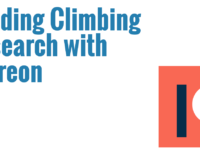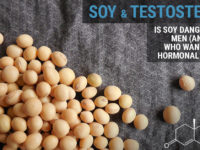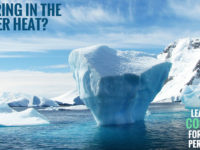In just a few short days, 2017 will be over and we’ll embark into the New Year of 2018. Overall, it was a good year for Climbing Nutrition. Personally, I’ve had better(!), but that saga will continue into the New Year.
As 2017 winds up, I’d like to revisit some of the top articles of the year according to the number of views they received:
#5: The Times Timing Matters
When does nutrient timing matter? It’s a big question for sports nutrition—perhaps even the question. Beyond eating the right nutrients to maximize performance, we want to make sure we’re eating them at the times that are most beneficial to us. As with so many topics in sports nutrition, though, there’s a lot of misinformation out there, partially because that’s the nature of nutrition and partially because we’ve learned a lot in the past ten years.
If you’re curious about the best strategies for nutrient timing in the modern age, check this article out. Carbohydrates, protein, and fat all get covered.
#4: An In-Depth Look at Energy Metabolism
I’ve tackled small parts of energy metabolism before—it’s hard not to when we’re talking about sports nutrition!—but I really wanted to do a bigger, more in-depth article on the topic. In the end, I wrote three to cover everything.
Part I of the series examines the biochemistry of each of the energy systems available to us (the phosphagen system, anaerobic glycolysis, aerobic glycolysis, and oxidative fat metabolism) and how they differ.
Part II of the series takes the biochemistry from Part I and applies it to debunking a common myth: the idea of “lactic acidosis”.
Finally, Part III of the series applies the biochemistry from Part I to explain the inherent advantages and disadvantages of carbohydrates and fats, and why so many strategies to optimize performance (particularly fat-related ones) are futile.
#3: Is Protein Supplementation Effective? AKA, “How Much Protein Do You Need?”
Articles on protein always find an interested audience at Climbing Nutrition, and this article was no different. Since I released the original series on protein, this is probably my closest look at how much protein we need and why.
What we know about protein is constantly evolving, and it shouldn’t come as much of a surprise that there’s little true consensus about how much you need. Most sports nutritionists I know still use a “grams-per-kilogram” model, which I consider outdated (and provide reason for in the article). Many think athletes benefit from extreme amounts of protein, for which there really isn’t evidence. This article, however, examines an opinion coming from the opposite corner—the much less vocal side that thinks we really don’t need as much as we typically recommend—and reconciles that opinion with everything else we “know” (and what I’ve previously written).
#2: Caffeine and Climbing
The first supplement guide I wrote this year covered the number one drug—and one of the most common ergogenic aids—caffeine. This article is the more reader-friendly “highlights” from that supplement guide, which by nature is a more academic read.
Whether you’re a coffee-fiend or rarely indulge in caffeinated beverages, a solid understanding of how caffeine affects (or does not affect) your climbing is beneficial. Since caffeine is so woven into many of our lives, it might not change much for you, but at the very least it’ll give you an idea of how best to harness the ergogenic effects of caffeine and glean whatever benefit you can.
#1: Growth Hormones in Meat: Myths & Reality
Surprisingly (at least to me), the #1 most-read article of the year is “Growth Hormones in Meat: Myths & Reality“. Perhaps it’s because it was published before most of the other articles and thus had more time to accumulate views, or perhaps it was because some of the other articles (such as the one on caffeine and the one on energy metabolism) were multi-part series that could have spread out their views. Whatever the reason, the top article wasn’t about sports nutrition, but rather the facts and fictions about growth agents in the meat industry.
I do really enjoy writing articles like this one, so I’m glad it found its way on this list; I’ll be sure to write more in the future! Part of my mission with this site is to spread good science, especially as it pertains to nutrition, and honestly I think it’s a more helpful in the long run to teach others about critical thinking in the realm of nutrition than simply to pass along facts. Of course there’s a place for those articles as well—they make up the bulk of the site!—but being able to distinguish between good science and pseudoscience cuts down significantly on the confusion surrounding nutrition and gives more confidence in one’s eating choices.
Special Mention: ClimbSci Episode 1: Protein
This past year, my friend Tom and I began a new webcast “ClimbSci”. We have lofty goals for this program, and while we’re still working out the kinks and finding our stride, we have released three episodes, one on each of the three macronutrients (protein, carbohydrates, fat).
We only managed to get three out this past year, but it’ll be a bigger part of next year, especially as we get the whole talking-instead-of-writing thing down. More than anything else, I like that it allows me to interact with you guys in a new way. I love writing, but there’s something about speaking that feels more personal. Plus, it gives me and Tom the chance to host live webcasts with call-ins in the future so you can literally interact with us!
That’s all for this year—I’ll see you again in 2018!















Really pleased to hear that the Climb Sci series will continue. Definitely really valuable and it allows me to learn about nutrition whilst doing other things, like the cooking or the washing up. It’s certainly much more personal. Before listening to that I often wondered what kind of a person you were but the voice and discussion just conveys information that writing can’t.
Happy New Year.